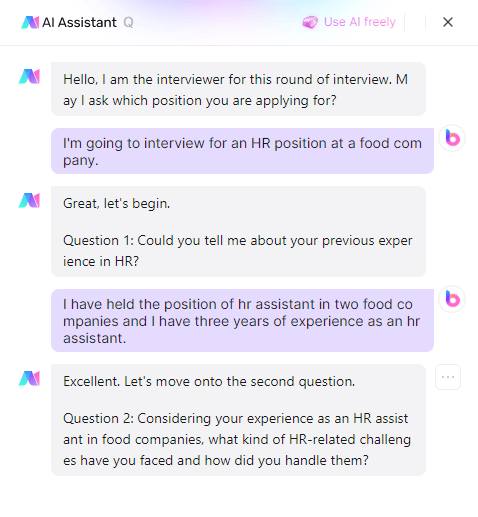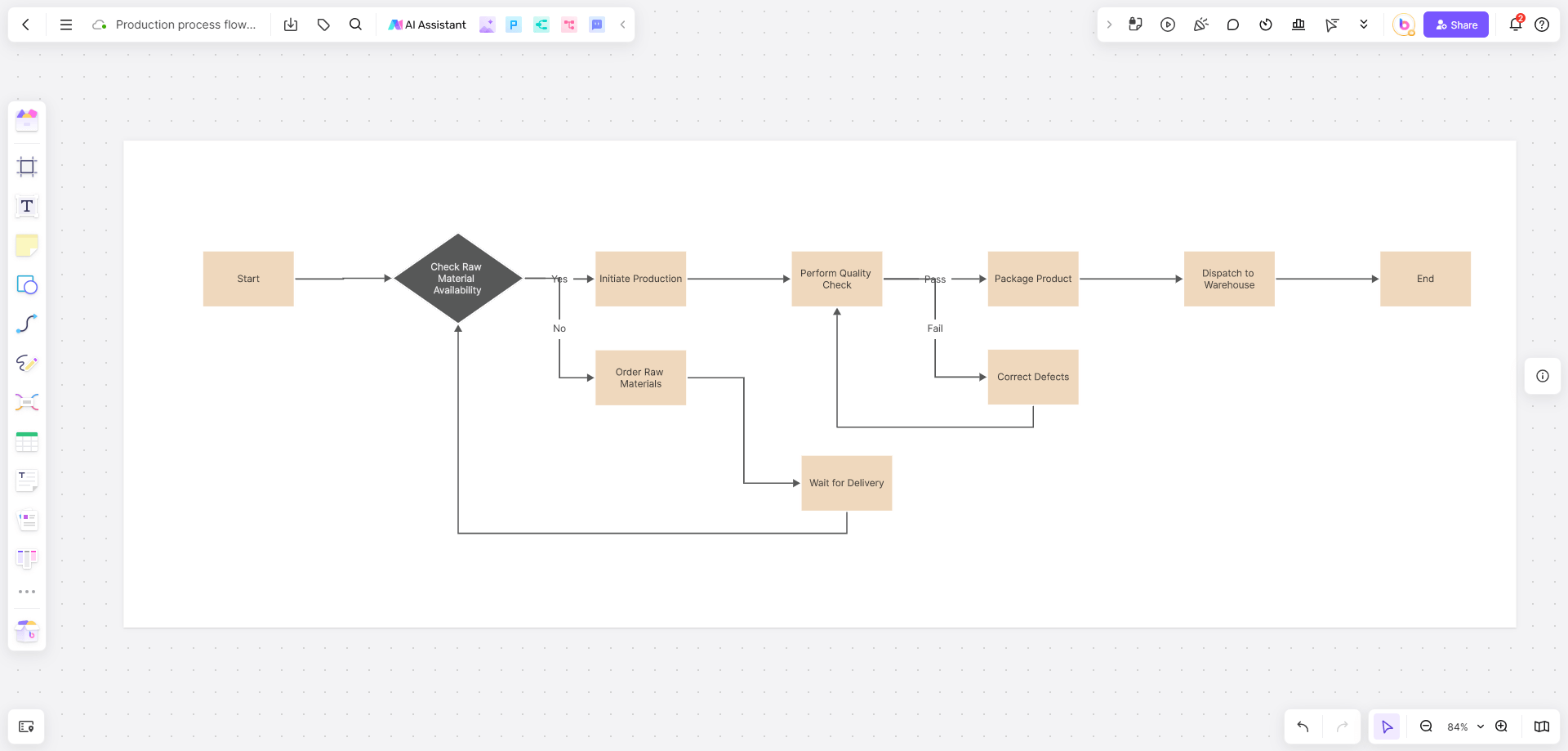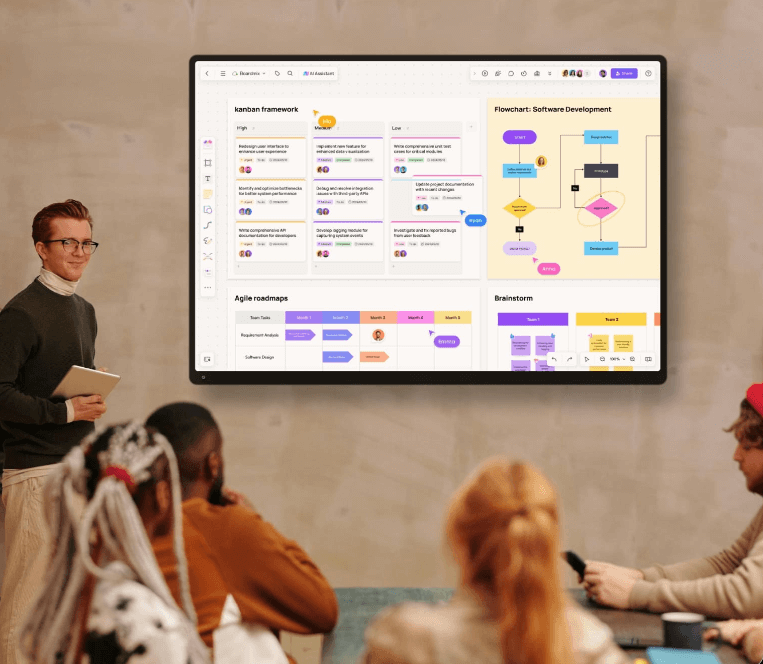The balanced scorecard is created using strategic focus, multidimensional balance, organizational synergy, and customer orientation to transform the company's vision and strategy into an actionable framework for all employees, propelling the organization from "passive execution" to "proactive value creation." In this article, you will learn how to create balanced scorecard with AI step by step, since this article examines how AI is transforming the conventional one.
What is Balanced Scorecard?
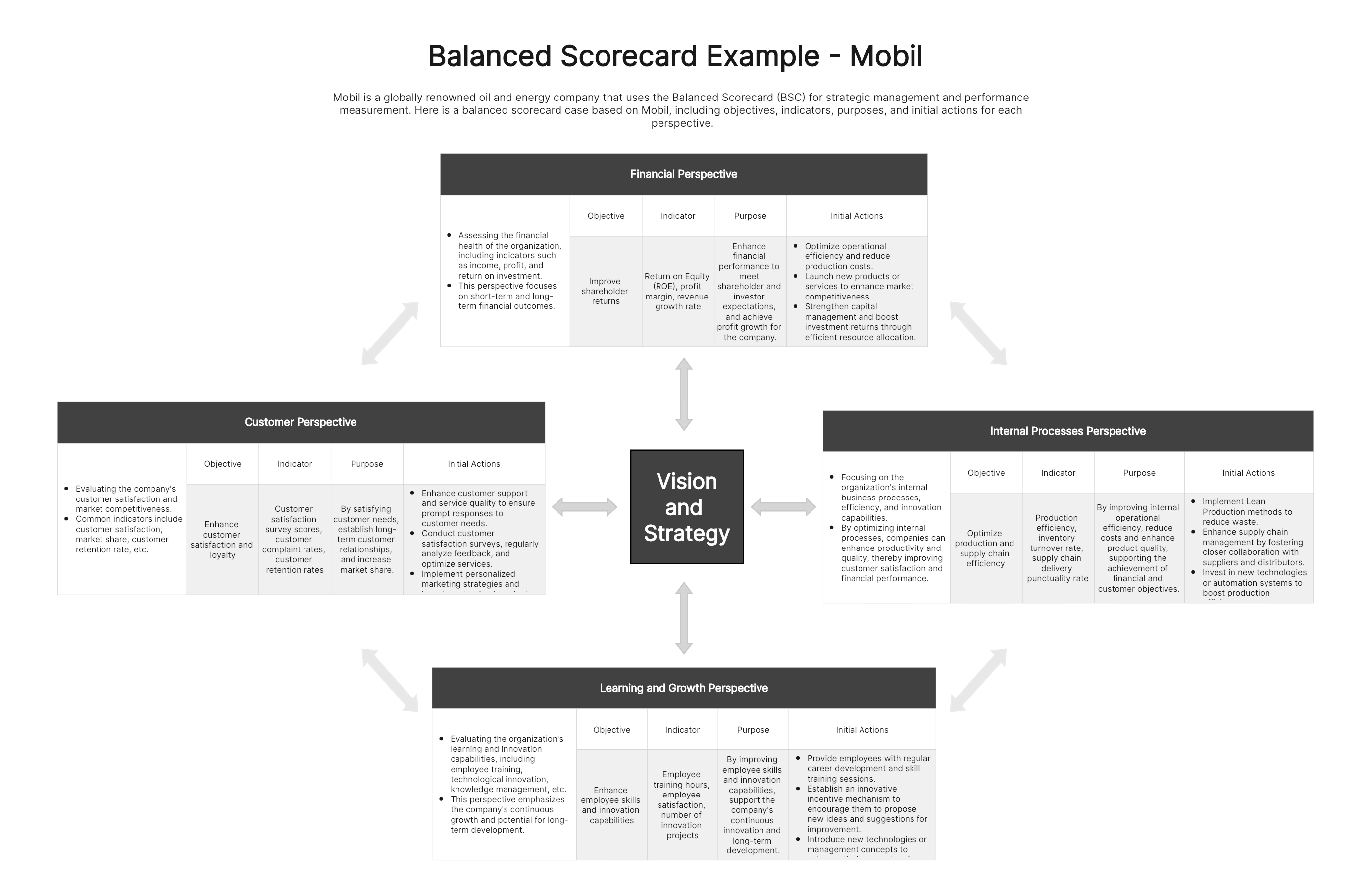
The Balanced Scorecard (BSC) is a tool that helps businesses monitor performance across four dimensions to refine strategic planning. Businesses use it to make sure that their operations are in line with their strategy and vision. The four primary views of the Balanced Scorecard are financial, customer, internal business processes, and learning and growth.
- Financial: What does success mean for shareholders and investors?
- Customer: What services do customers expect from the company?
- Internal business processes: How can internal workflows be improved to increase efficiency?
- Learning & growth: How can employees better cope with challenges?
These four viewpoints have an impact on one another and work together to support the enterprise's strategic planning and management. For instance, reaching learning and growth objectives will aid in the optimization of internal procedures, and reaching customer goals will aid in the achievement of financial goals.
Step Guide: How to Create Balanced Scorecard with AI?
Businesses are investigating how to create balanced scorecard with AI in order to increase efficiency and insights as a result of the pace of digital transformation. Balanced scorecards can be automatically generated by Boardmix, which speeds up, improves accuracy, and makes the process more data-driven.
Step 1: Login to Boardmix

Visit the Boardmix official website and click "Sign up for free" to create an account. Then, after logging in, click "AI-generation template" to start your experience.
Step 2: Preparation of creating balanced scorecard AI

Prior to creating a balanced scorecard, you must ascertain the company's strategic objectives. To create a precise, time-bound, and actionable goal, you can use Boardmix AI to help you create an AI SMART goal.
Step 3: Use AI to make BSC

Find the Boardmix AI assistant in the bottom right corner of the canvas, then locate "balanced scorecard" under "business report". You are able to give commands after you have entered the designated conversation window. For example, generate a balanced scorecard AI template for "an international hotel group in the United States."
AI will output visual tables based on each perspective, including goals, indicators, measurements, and execution plans.
Step 4: Explore more AI features

Besides generating templates, you can also continue to seek help from AI. If you need a document for the financial execution plan, select the table and click on the Boardmix AI assistant icon. At this point, you will see many additional features: summarize, mindmap, brainstorming, etc.

Click on the smart robot, then select "Generate Document," and you will receive an action plan document to help improve your company's financial performance.

You can still continue to ask AI questions, such as choosing some related questions you might be interested in.
Step 5: Adjust the balanced scorecard to better reflect your strategy
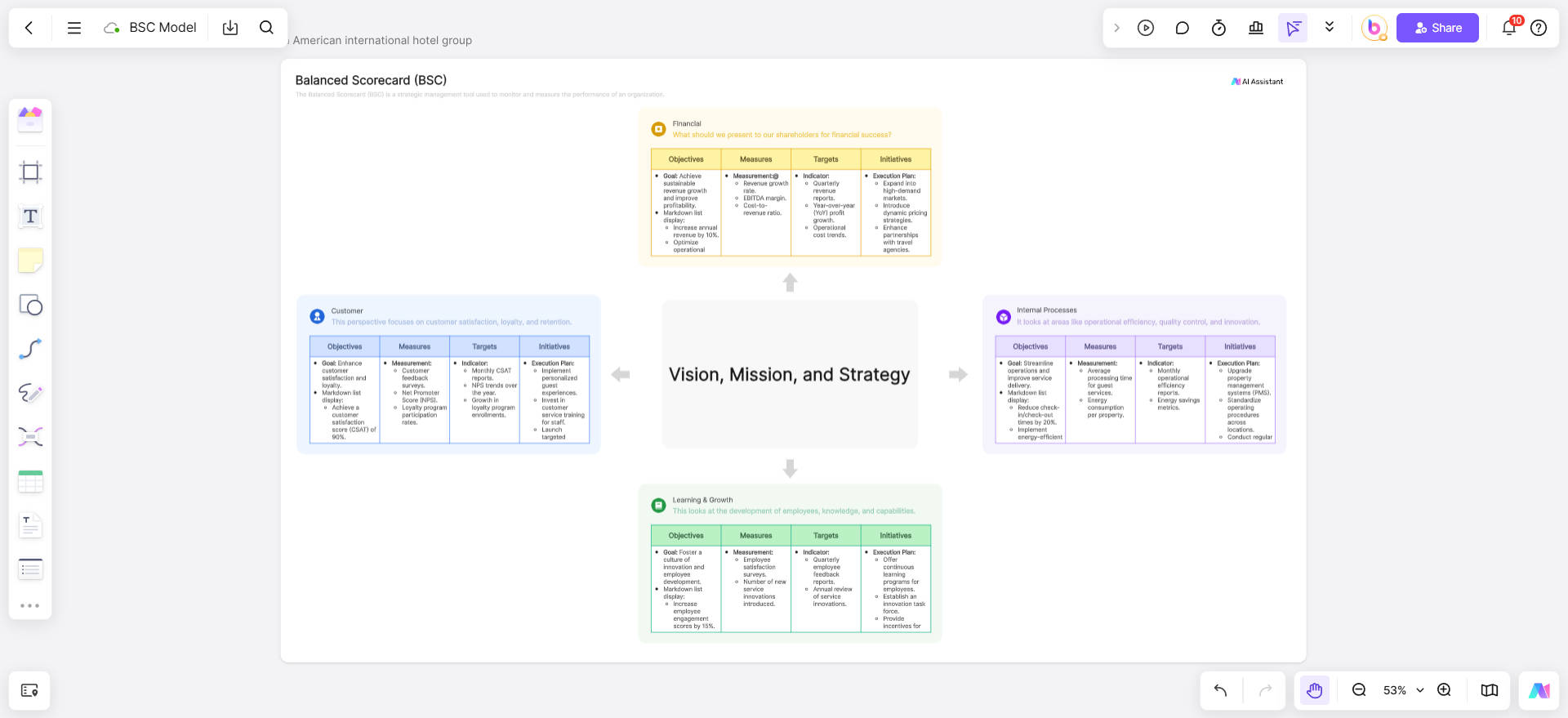
Please go over the four aspects of money, customers, internal processes, and learning and growth one at a time after the AI output structure.
- Adapt strategic goals to your strategies for market expansion or distinctive brand positioning.
- Modify KPIs or measures to conform to your organization's performance criteria.
- Establish reasonable objectives based on competitive standards or internal data.
- Adjust the action plan in light of people allocation, resource availability, and future plans.
Step 6: Collaboration in real time
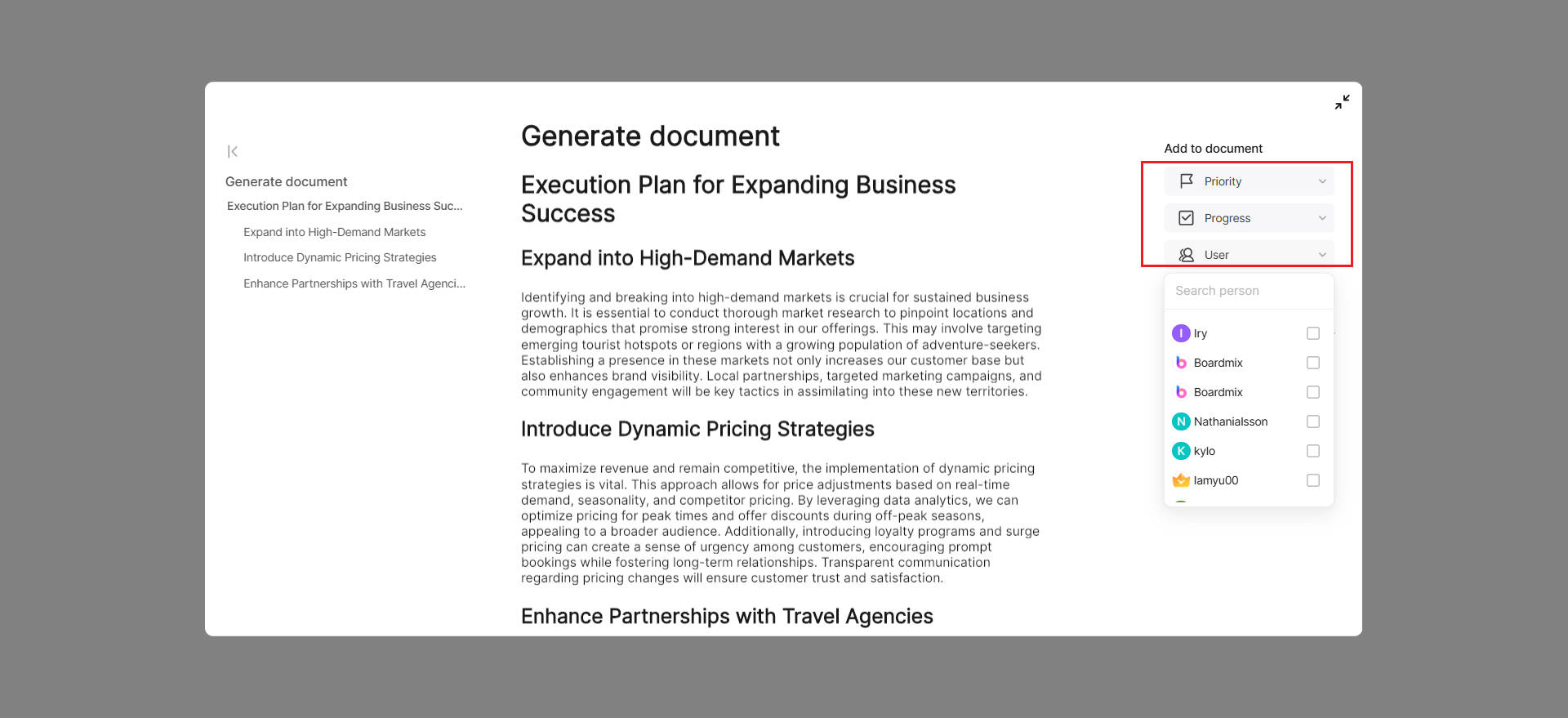
Team members from various departments, including marketing, operations, finance, and human resources, can all contribute to the scorecard in real time using Boardmix. You can add comments, designate roles, or incorporate supporting information straight into the canvas. When discussing KPIs or action steps, use the "@mention" feature to tag relevant stakeholders, making sure everyone understands their role in achieving the goals.
Case Study: Southwest Airlines Balanced Scorecard AI
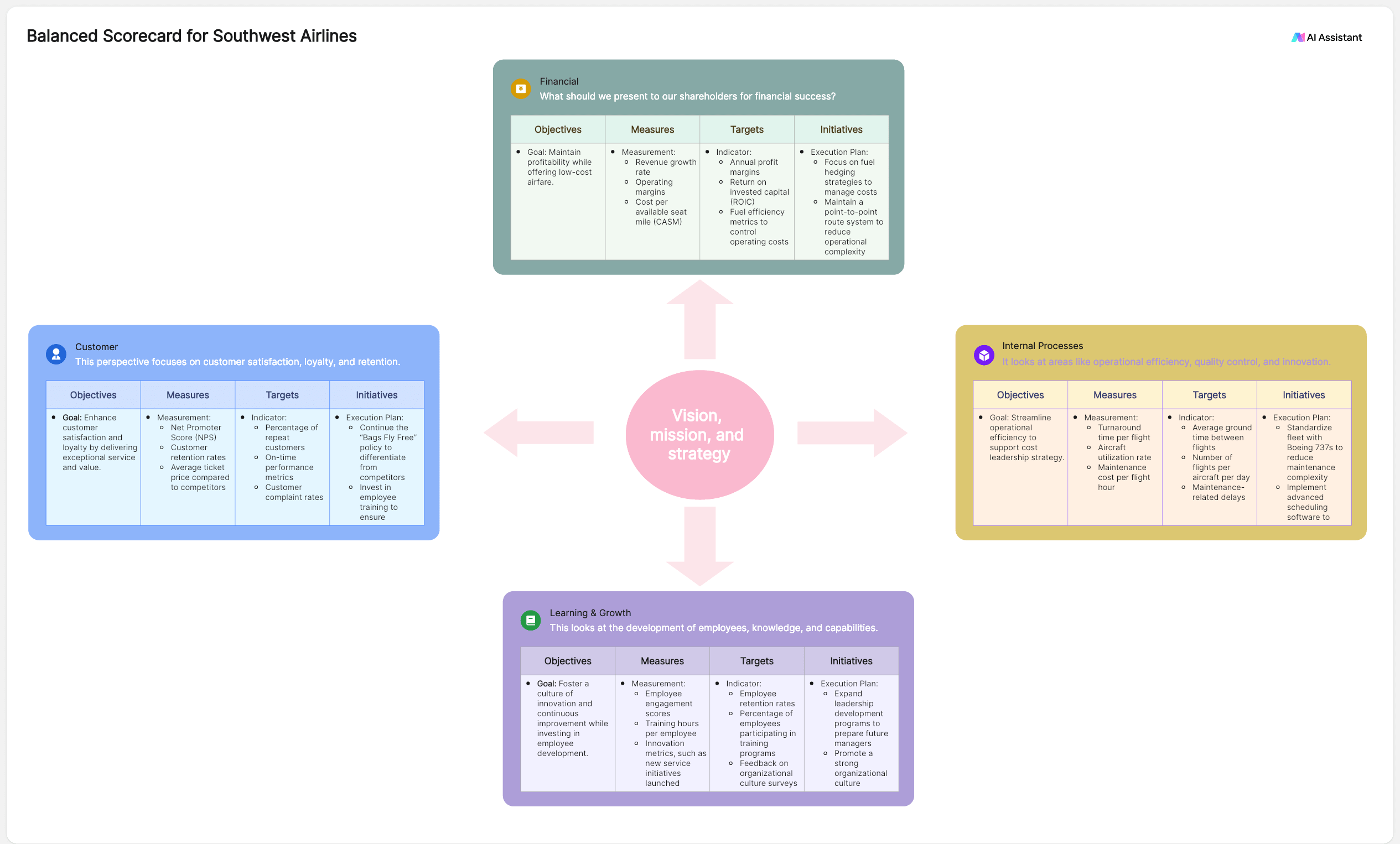
Being a top airline, performance management is an inevitable challenge for Southwest Airlines. Rigid internal procedures, confusing financial measures, and low operational efficiency can all be resolved by applying balanced scorecard analysis. The following case study will explore how the balanced scorecard can enhance Southwest Airlines' performance.
Financial perspective:
- Objectives: Maintain profitability while offering low-cost airfare.
- Indicators: Annual profit margins, return on invested capital (ROIC), fuel efficiency metrics to control operating costs
- Initiatives: Focus on fuel hedging strategies to manage costs, maintain a point-to-point route system to reduce operational complexity
Customer perspective:
- Objectives: Enhance customer satisfaction and loyalty by delivering exceptional service and value.
- Indicators: Percentage of repeat customers, on-time performance metrics, customer complaint rates
- Initiatives: Continue the “Bags Fly Free” policy to differentiate from competitors
Internal processes perspective:
- Objectives: Streamline operational efficiency to support cost leadership strategy
- Indicators: Average ground time between flights, number of flights per aircraft per day, maintenance-related delays
- Initiatives: Standardize fleet with Boeing 737s to reduce maintenance complexity, implement advanced scheduling software to optimize crew and fleet utilization
Execution plan perspective:
- Objectives: Foster a culture of innovation and continuous improvement while investing in employee development
- Indicators: Employee retention rates, percentage of employees participating in training programs
- Initiatives: Expand leadership development programs to prepare future managers
Using an AI balanced scorecard, Southwest Airlines can automatically collect and analyze these metrics, detect patterns, and recommend strategic adjustments, thereby improving operational efficiency and customer loyalty.
How does AI Affect the Balanced Scorecard?
✨Speed and automation: The amount of manual labor required to create and update scorecards has decreased thanks to artificial intelligence.
✨Smarter KPIs: AI makes recommendations for KPIs based on historical performance, industry norms, and trends.
✨Dynamic strategy: Based on real-time data, the scorecard is updated regularly, becoming a dynamic document.
✨Minimize bias: Accuracy and fairness are increased when decisions are based on facts rather than conjecture.
Conclusion
Using tools like AI-powered balanced scorecards will become a competitive advantage as companies negotiate increasingly complicated situations. Boardmix provide intelligent, scalable, and user-friendly solutions that can facilitate strategic execution in a clear and timely manner for teams thinking about how to create balanced scorecard with AI. Combining AI and the BSC technique guarantees that you stay coordinated, flexible, and at the forefront of your industry, regardless of your size.



